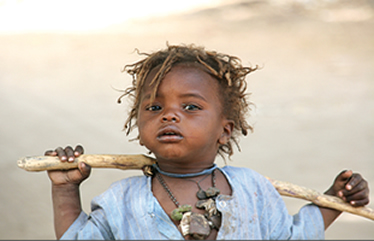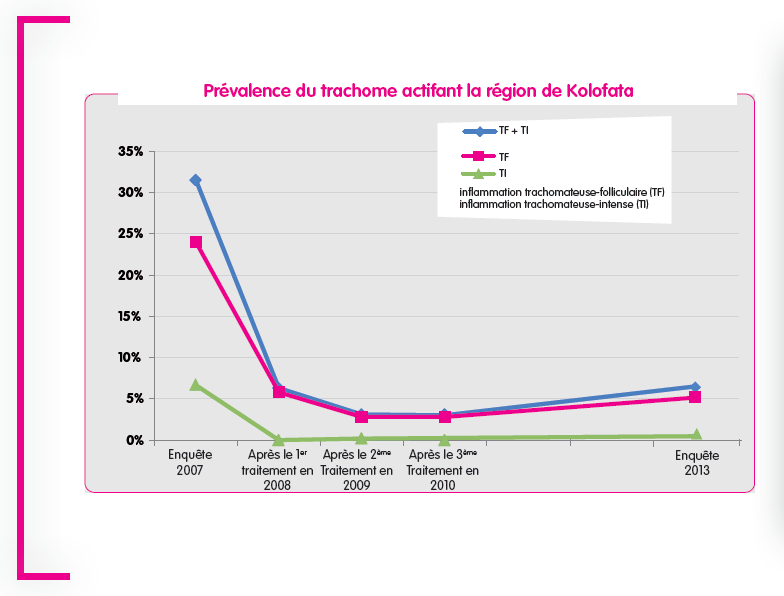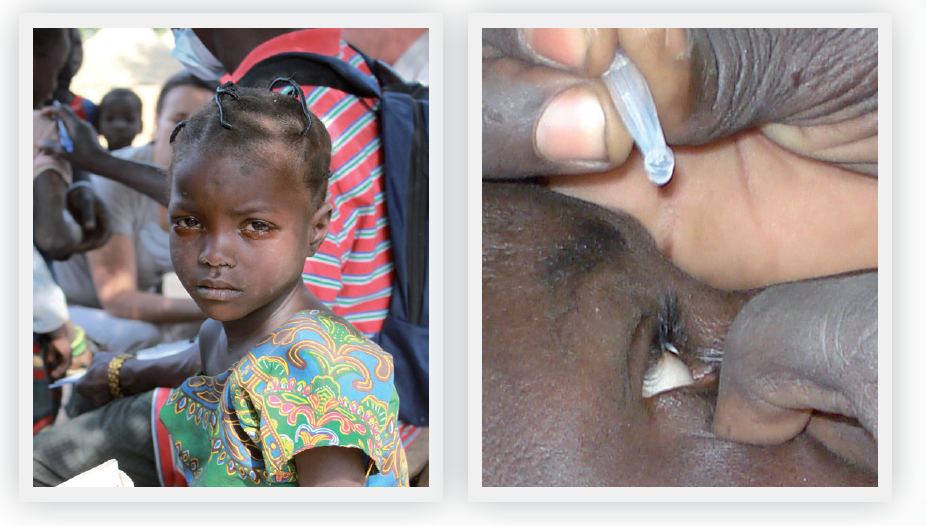- A-
- A+

In the mid 1990’s the W.H.O. Alliance for the Global Elimination of Trachoma by 2020 (GET 2020), put in place the innovative SAFE strategy, combining medical and surgical measures with hygiene education to maximise the impact. Nevertheless, for the W.H.O., treatment by antibiotics remains an essential tool.
This is why, in 1997, the W.H.O. put out an urgent global appeal to the pharmaceutical industry to develop a short-course topical antibiotic to eradicate trachoma in poor countries.
Théa heeded this request and so, in 1999, started the long program to develop such eye drops, a program which was to last 8 years due to the duration of the clinical studies and registration procedures, but also to technical difficulties encountered at the galenic stage.
The second part of the adventure started in 2008.
2 160 000 doses of these new antibiotic eye drops were transported to the Kolofata area in North Cameroon and administered by health-care workers to a population of 115 000 people over three campaigns of treatment.
Why Kolofata? This area, situated in the North of the country, is a region which has always paid a heavy tribute to eye diseases; because, unsurprisingly, a survey carried out 3 years previously in this town by the O.S.F. charity within the framework of the national Cameroon program to fight against blindness, showed the prevalence of active trachoma in children aged between 1 and 10 years old to be about 21%.
Success came quickly.
Firstly, because the course of treatment is extremely short: three days of treatment, morning and evening, are sufficient. Next, soon after the first campaign, the prevalence of active trachoma had fallen to 6.3% and dropped further to 3% one year after the end of the third campaign.
In January 2013, three years after the last campaign of treatment, a Fondation Théa team, accompanied by Jean-Frédéric Chibret, returned to Cameroon to evaluate if a further campaign would be beneficial.  The result of this assessment: the report of the mission by Dr Abdou Amza estimates the prevalence of active forms to be at 5.2 %.
The result of this assessment: the report of the mission by Dr Abdou Amza estimates the prevalence of active forms to be at 5.2 %.
The treatment delivered had been very well tolerated, with no serious ocular or systemic side effects.
However, certain villages require to be targeted and the Fondation Théa plans to treat 15 000 more people via the O.S.F. charity. In the meantime, we can be sure of one thing: the results obtained in Kolofata lead us to hope that the infection rate will soon fall below the epidemic level and the disease will be eradicated.
The elimination of trachoma is now within reach in North Cameroon, and why not, in the near future, in all the other hyperendemic regions of the earth.



